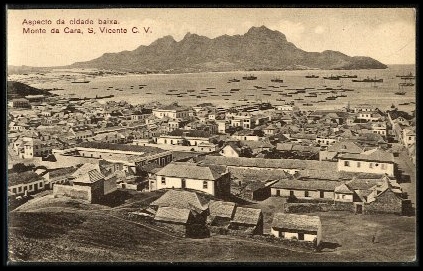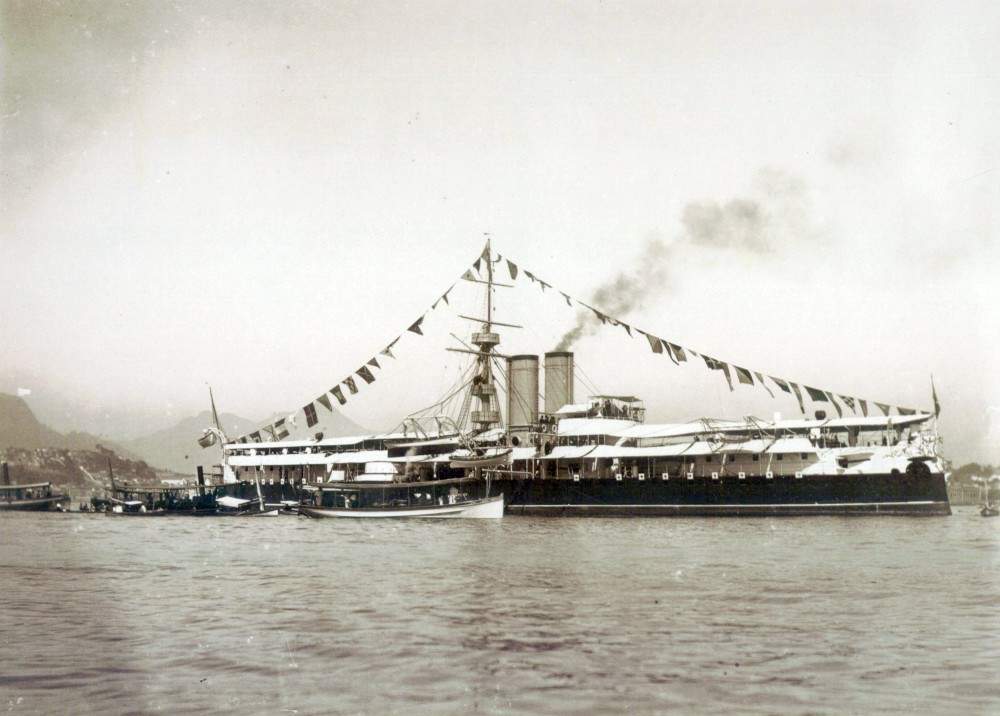|
Spanish Cruiser Infanta Maria Teresa
''Infanta María Teresa'' was the lead ship of her class of armoured cruiser constructed for the Spanish Navy. The ship fought at the Battle of Santiago de Cuba during the Spanish–American War. Technical characteristics ''Infanta María Teresa'' was built at Bilbao, northern Spain, to a design drawn up by Palmers Shipbuilding and Iron Company of Jarrow, England. Her keel was laid in 1889, she was launched on 30 August 1890, and was completed in 1893. She had two funnels and was fast and comparatively well-armed. Her main armament was mounted on the centerline in single barbettes fore and aft. Her armor was poor: her guns had only lightly armored hoods, her guns were mounted in the open on the upper deck, her armor belt was thin and protected only two-thirds of her length, and she had a high, unprotected freeboard that took much damage during the Battle of Santiago de Cuba. Like other nineteenth-century warships, she was heavily furnished and decorated with wood, which th ... [...More Info...] [...Related Items...] OR: [Wikipedia] [Google] [Baidu] |
Kiel Canal
The Kiel Canal (german: Nord-Ostsee-Kanal, literally "North- oEast alticSea canal", formerly known as the ) is a long freshwater canal in the German state of Schleswig-Holstein. The canal was finished in 1895, but later widened, and links the North Sea at Brunsbüttel to the Baltic Sea at Kiel-Holtenau. An average of is saved by using the Kiel Canal instead of going around the Jutland Peninsula. This not only saves time but also avoids storm-prone seas and having to pass through the Danish straits. The Kiel Canal is the world's most frequented artificial waterway with an annual average of 32,000 ships (90 daily), transporting approximately 100 million tonnes of goods. Besides its two sea entrances, the Kiel Canal is linked, at Oldenbüttel, to the navigable River Eider by the short Gieselau Canal. History The first connection between the North and Baltic Seas was constructed while the area was ruled by Denmark–Norway. It was called the Eider Canal and used stretches o ... [...More Info...] [...Related Items...] OR: [Wikipedia] [Google] [Baidu] |
Keel
The keel is the bottom-most longitudinal structural element on a vessel. On some sailboats, it may have a hydrodynamic and counterbalancing purpose, as well. As the laying down of the keel is the initial step in the construction of a ship, in British and American shipbuilding traditions the construction is dated from this event. Etymology The word "keel" comes from Old English , Old Norse , = "ship" or "keel". It has the distinction of being regarded by some scholars as the first word in the English language recorded in writing, having been recorded by Gildas in his 6th century Latin work ''De Excidio et Conquestu Britanniae'', under the spelling ''cyulae'' (he was referring to the three ships that the Saxons first arrived in). is the Latin word for "keel" and is the origin of the term careen (to clean a keel and the hull in general, often by rolling the ship on its side). An example of this use is Careening Cove, a suburb of Sydney, Australia, where careening was carried out ... [...More Info...] [...Related Items...] OR: [Wikipedia] [Google] [Baidu] |
Cape Verde Islands
, national_anthem = () , official_languages = Portuguese , national_languages = Cape Verdean Creole , capital = Praia , coordinates = , largest_city = capital , demonym = Cape Verdean or Cabo Verdean , ethnic_groups_year = 2017 , government_type = Unitary semi-presidential republic , leader_title1 = President , leader_name1 = José Maria Neves , leader_title2 = Prime Minister , leader_name2 = Ulisses Correia e Silva , legislature = National Assembly , area_rank = 166th , area_km2 = 4033 , area_sq_mi = 1,557 , percent_water = negligible , population_census = 561,901 , population_census_rank = 172nd , population_census_year = 2021 , population_density_km2 = 123.7 , population_density_sq_mi = 325.0 , population_density_rank = 89th , GDP_PPP ... [...More Info...] [...Related Items...] OR: [Wikipedia] [Google] [Baidu] |
São Vicente, Cape Verde
São Vicente (Portuguese for " Saint Vincent") is one of the Barlavento Islands, the northern group within the Cape Verde archipelago in the Atlantic Ocean, off the West African coast. It is located between the islands of Santo Antão and Santa Luzia, with the Canal de São Vicente separating it from Santo Antão. Geography The island is roughly rectangular in shape with an area of . From east to west it measures and from north to south .Cabo Verde, Statistical Yearbook 2015 Instituto Nacional de Estatística The island, of |
Cuba
Cuba ( , ), officially the Republic of Cuba ( es, República de Cuba, links=no ), is an island country comprising the island of Cuba, as well as Isla de la Juventud and several minor archipelagos. Cuba is located where the northern Caribbean Sea, Gulf of Mexico, and Atlantic Ocean meet. Cuba is located east of the Yucatán Peninsula (Mexico), south of both the American state of Florida and the Bahamas, west of Hispaniola ( Haiti/Dominican Republic), and north of both Jamaica and the Cayman Islands. Havana is the largest city and capital; other major cities include Santiago de Cuba and Camagüey. The official area of the Republic of Cuba is (without the territorial waters) but a total of 350,730 km² (135,418 sq mi) including the exclusive economic zone. Cuba is the second-most populous country in the Caribbean after Haiti, with over 11 million inhabitants. The territory that is now Cuba was inhabited by the Ciboney people from the 4th millennium BC with the Gua ... [...More Info...] [...Related Items...] OR: [Wikipedia] [Google] [Baidu] |
Havana
Havana (; Spanish: ''La Habana'' ) is the capital and largest city of Cuba. The heart of the La Habana Province, Havana is the country's main port and commercial center.Cuba ''''. . The city has a population of 2.3million inhabitants, and it spans a total of – making it the largest city by area, the most populous city, and the [...More Info...] [...Related Items...] OR: [Wikipedia] [Google] [Baidu] |
USS Maine (ACR-1)
''Maine'' was a United States Navy ship that sank in Havana Harbor on February 15, 1898, contributing to the outbreak of the Spanish–American War in April. U.S. newspapers, engaging in yellow journalism to boost circulation, claimed that the Spanish were responsible for the ship's destruction. The phrase, "Remember the ''Maine!'' To hell with Spain!" became a rallying cry for action. Although the ''Maine'' explosion was not a direct cause, it served as a catalyst that accelerated the events leading up to the war. ''Maine'' is described as an armored cruiser or second-class battleship, depending on the source. Commissioned in 1895, she was the first U.S. Navy ship to be named after the state of Maine. ''Maine'' and the similar battleship were both represented as an advance in American warship design, reflecting the latest European naval developments. Both ships had two gun turrets staggered ''en échelon'', and full sailing masts were omitted due to the increased reliability ... [...More Info...] [...Related Items...] OR: [Wikipedia] [Google] [Baidu] |
Pascual Cervera Y Topete
Admiral Pascual Cervera y Topete (18 February 1839, Medina-Sidonia, Cádiz, Spain – 3 April 1909, Puerto Real, Cádiz, Spain) was a prominent Spanish naval officer with the rank of '' Almirante'' ( admiral) who served in a number of high positions within the Spanish Navy and had fought in several wars during the 19th century. Having served in Morocco, the Philippines, and Cuba, he went on to be Spain's naval minister, chief of naval staff, naval attaché in London, the captain of several warships, and most notably, commander of the Cuba Squadron during the Spanish–American War. Although he believed that the Spanish Navy was suffering from multiple problems and that there was no chance for victory over the United States Navy, Cervera took command of the squadron and fought in a last stand during the Battle of Santiago de Cuba. Early life and service Pascual Cervera y Topete was born in Medina-Sidonia in the province of Cadiz, the son of a Spanish Army officer who fought aga ... [...More Info...] [...Related Items...] OR: [Wikipedia] [Google] [Baidu] |
Flagship
A flagship is a vessel used by the commanding officer of a group of naval ships, characteristically a flag officer entitled by custom to fly a distinguishing flag. Used more loosely, it is the lead ship in a fleet of vessels, typically the first, largest, fastest, most heavily armed, or best known. Over the years, the term "flagship" has become a metaphor used in industries such as broadcasting, automobiles, education, technology, airlines, and retail to refer to their highest profile or most expensive products and locations. Naval use In common naval use, the term ''flagship'' is fundamentally a temporary designation; the flagship is wherever the admiral's flag is being flown. However, admirals have always needed additional facilities, including a meeting room large enough to hold all the captains of the fleet and a place for the admiral's staff to make plans and draw up orders. Historically, only larger ships could accommodate such requirements. The term was also used by ... [...More Info...] [...Related Items...] OR: [Wikipedia] [Google] [Baidu] |
Belt Armor
Belt armor is a layer of heavy metal armor plated onto or within the outer hulls of warships, typically on battleships, battlecruisers and cruisers, and aircraft carriers. The belt armor is designed to prevent projectiles from penetrating to the heart of a warship. When struck by an artillery shell or underwater torpedo, the belt armor either absorbs the impact and explosion with its sheer thickness and strength, or else uses sloping to redirect the projectile and its blast downwards. Typically, the main armor belt covers the warship from its main deck down to some distance below the waterline. If, instead of forming the outer hull, the armor belt is built inside the hull, it is installed at a sloped angle for improved protection, as described above. The torpedo bulkhead Frequently, the main belt's armor plates were supplemented with a torpedo bulkhead spaced several meters behind the main belt, designed to maintain the ship's watertight integrity even if the main belt ... [...More Info...] [...Related Items...] OR: [Wikipedia] [Google] [Baidu] |





